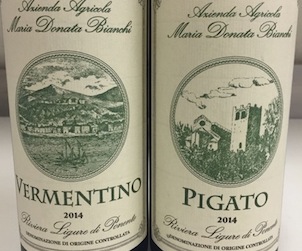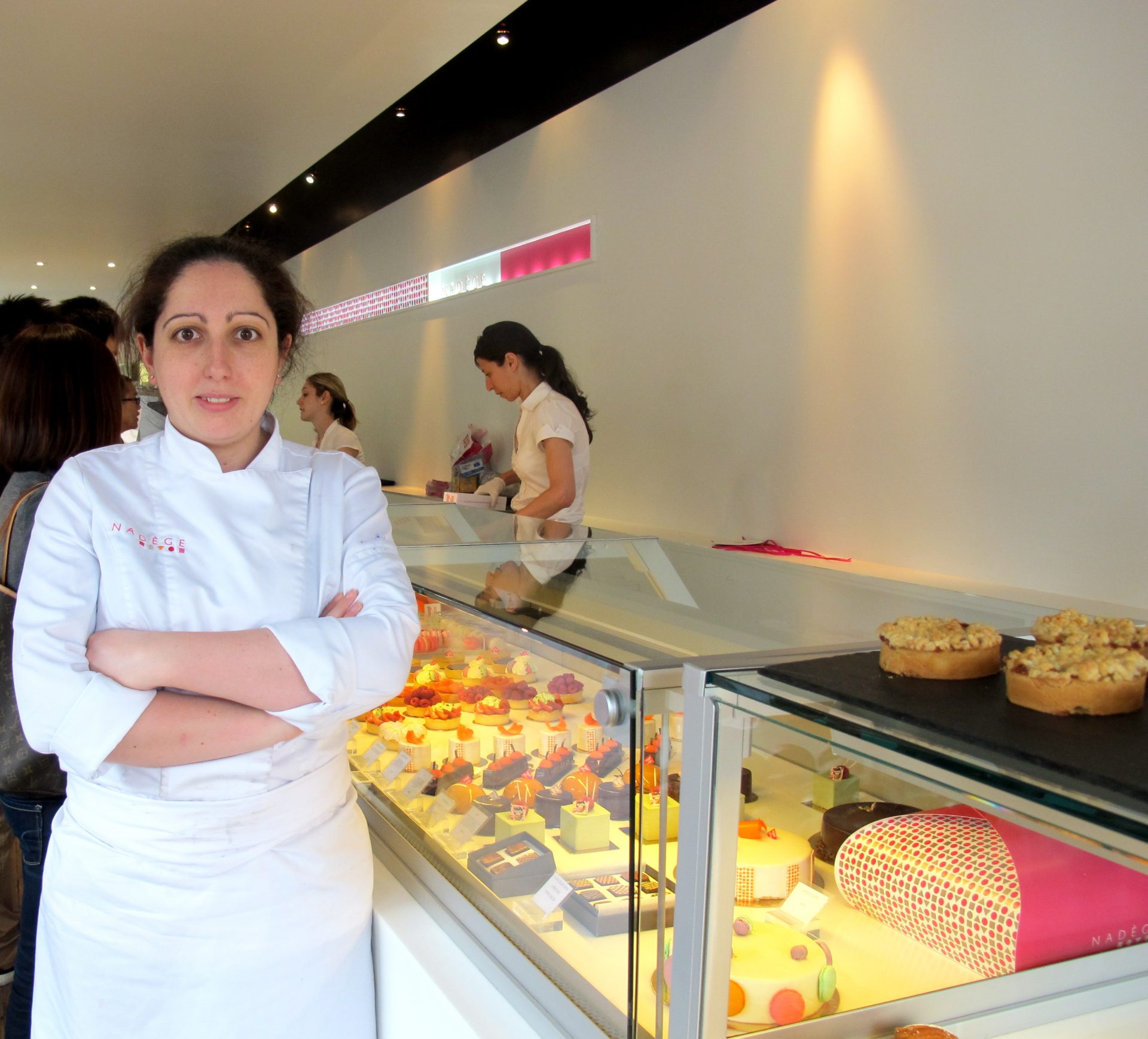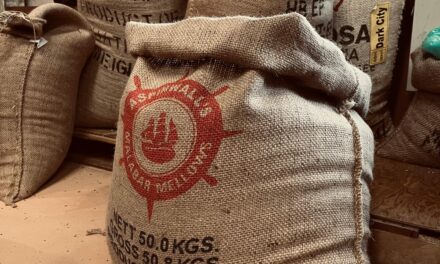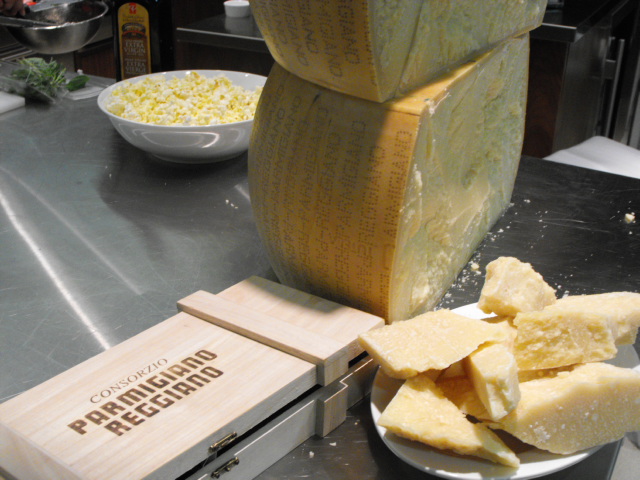by Malcolm Jolley

A mixture of ground pork, spices like chili and fresh herbs like cilantro are folded into dough pouch and boiled to make Khinkali (dumplings) in the kitchen at Chelti Vineyard, Kakheti Eastern Georgia, November 2011
Previously, I posted on Georgia’s more than 7,000 year old wine culture, which has evolved more or less independently from Western Europe’s (i.e. the French model with which nearly all the rest of the world produces wine). But wine is only one of the requisites of the Georgian table, there must also be bread. While Georgia’s culinary traditions are as singular as her wine traditions, they demonstrate much about her history and geographical location: there are pronounced Turkish, Black Sea, Persian, Mongol and Russian influences as well as those that may have come from all sundry of ancient travelers on The Silk Road. All of these influences are mixed together with a healthy mix of pork and wine in this purposefully Orthodox Christian country surrounded by Muslim lands.
“Everything in Georgia happens at the table,” explains Irakli Nikolashvili, whose family makes organic wine in the Kakheti region, east of the Georgian capital, Tibilisi. Irakli’s company, Nikolashvili Wines is an importer of Georgian wines based in Toronto; he accompanied and guided myself and a group of Canadian and American wine professionals around Tbilisi and Khaketi when we were guests of the Georgian export ministry. On two occasions, once in the old city of Tbilisi and then in the foothills of the Northern Caucusus at the Chelti winery, Irakli led a half dozen of us or so away from the group to sit down to a proper meal. Ever the informal ambassador, Irakli explained to us the rituals of the Georgian table, where there is always “bread and wine”.
At the Benjamin Wine Bar in the old city of Tibilisi, with its narrow Ottoman cobbled streets terraced up the banks of the Kura River, Irakli introduced us to Georgia’s most famous dish, khachapuri*. Khachapuri is a chewy, doughy hot baked flat bread with a salty cheese on top. I think it’s fair to compare it to pizza bianca. To extend the Italian analogy dangerously further, as each Italian village (let alone region) will have its own pasta, so each Georgian place has a version of the dish; the doughs and cheeses vary regionally, and sometimes an egg is cracked on topped. The version we had in Tbilisi was deliciously chewy, salty and mild, which made it the perfect food for any naturally made wine: tannic, acidic or both. In many ways, Khachapuri is emblematic of Georgian cuisine, at least as I experienced it, which was altogether shy of overpowering flavours, like chilli or vinegars and flavoured gentle and salty foods like cheese and bread… the foods of a wine culture.
At Chelti, proprietor Giorgi Mirianashvili not only treated us to a tour of the winery and vineyard, the unearthing of a qvervi (an honour not loosely granted to strangers, for which we were all both humbled and very grateful), but also a fantastic meal of some of the best bread I have tasted, soupy dumplings, pork grilled on skewers over vine cuttings, cow’s milk cheese that was fermented in a sheep’s stomach, and a salad of greens I had never seen before, which included (I think) a relative of the caper. All of it washed down with Chelti’s amazing single vineyard Saperavi red, red wine. And a splash or two of Borjomi, Georgia’s famous (and allegedly hangover curing**) mineral water.

Khinkali at Chelti winery in the Khaketi region fo Georgia with cheese, salad and preserved tomato sauce.
Georgia is a massive plain bordered to the north and south by the Caucasus mountain ranges, the Black Sea to the west and Azerbaijan to the east. While the Georgian people have clung to their culture and Christianity for two millenia, the land has been subject to multiple foreign powers including Mongol, Ottoman and Russian/Soviet rule for centuries. While this may have not been very good news for the average Georgian peasant, it’s made for an amazingly rich and diverse food culture. Georgians consider themselves at the very eastern edge of ‘Europe’. Along with their immediate southern neighbours in the Caucasus in Armenia, they are surrounded by traditionally Muslim lands: Chechnya, Dagestan, Turkey and Iran to name a few. The result is a cuisine that reminds one of Persia and the Middle East, but with pork and cattle and water buffalo – the latter grazing in the plains and mountain meadows. The food I had in Tbilisi and Khaketi drew on these traditions, and less on the Western Georgian, Black Sea cuisine, which incorporates more yogurts and walnuts***.
At Chelti we had cubes of pork grilled simply over an open fire of vine cuttings that were dressed with sliced onions and were redolent of smoke and salt – in Tbilisi the same dish, grilled at the restaurant but with an exotic (Black Sea?) touch of pomegranate. As we traveled in the countryside, we saw many gardens with persimmon trees – down from the mountains, the climate in Georgia is relatively mild, as befits the “cradle of wine”. With them bread baked on the sides of a wood-fired clay oven – basically a tandoor. It was incredibly good: crusty, chewy, a little salty, a little yeasty and a little sour. We took it plain, or with a feta-like salty hard cheese of cow’s milk fermented to a pitched farmyard bouquet in a sheep’s stocmack and tore into it savagely. On the side a salad of a pickled, caper like vine (or perhaps it was simply the stalks of a caper plant?) mixed with parsley and onion. But the star of lunch was the khinkali. We watched these dumplings being formed by hand by a local woman cook in the kitchen. Khinkali is central tot he Khaketi cuisine – proper ones may have, and only have, exactly 18 folds where they have been pinched together. Khinkali are reminiscent of Chinese dumplings, which makes me suspect they came over with the Mongols and Huns who trampled across the Caucasus on their way to raid the Near-East and Eastern Europe. These were delicious: ground pork mixed with cilantro, chilli and spring onion and boiled in their wheat flour envelopes. A good measure of the boiling water seeps into the dumpling, which creates a broth inside the pouch. They must be eaten by hand, and the diner must suck the hot broth with care lest he end up like a visitor from Canada who had to wipe his chin repeatedly (if happily). An advanced khinkali eating method involved spooning a mild tomato sauce onto one’s plate to smear onto the dumplings, which added another level of flavour complexity.
Irakli said, “Everything in Georgia happens at the table, ” and as the hours sped past at the table at Chelti I began to understand what he meant. Along with the over-abundant quantities of food and Saperavi wine, came a toast every few minutes. As our translater, Irakli took the traditional role of the Tamada, the “toastmaster”, and cycled through the myriad of set Georgian toasts (all poetically and heartfeltfully incanted) to things like the nation, family and the ladies at the table as well as very particular ones directed at us, our vintner host, friendship between our nations and so on. The structure and rhythm of the toasts (which were under Ottoman rule a question of cultural and religious survival, rather than mere party-making) gave our supra an elegance and civilizing effect. Somehow we all managed to drink a lot of wine without any bad behaviour or ugly consequence. By the time the sun had set, we were happy and full of just not just bread and wine, but of new tastes and memories.

Zoltan Szabo wards off any lingering trouble from a late night in Tbilisi with a bottle of Georgia's fabled Borjomi.
*English spellings of Georgian words are phonetic, since the Georgia has a completely unique alphabet and language. As a result, any and all of these dishes will be spelled differently by different sources: cachapouri, hachapuri, etc. Some linguists suspect and theorize a connection with the Basque language, of all things. Georgians certainly do share with the Basques a consonant rich tongue, and Georgia was once called Iberia by Roman and other cartographers, lending much plausibility to the theory, not too mention a predilection for good wine and simple dishes made of excellent ingredients to go with them.
**Boris Yeltsin, the 1990’s Russian President known for his enthusiasm for strong waters swore by Borjomi as a morning-after cure and, it is said, had a supply smuggled into Russia even after relations between the former imperial power and the new nation deteriorated to the point of the trade embargo that persists today. It is available in Canada at Eastern European delicatessens which cater to the tastes of emigres from the former Warsaw Pact countries.
***Ground walnut sauces are considered a defining trait of Georgian cuisine, but in the few meals I had there I didn’t have any, so my conjecture is that they are more typical to the West of where I was. I did have Churchkhela, the walnut and grape juice sausage of an ‘energy bar’ that traditionally gives Georgian warriors strength in battle, but that’s a whole different story.
 Malcolm Jolley is the executive editor of Good Food Revolution, founder and executive director of Good Food Media and a food and wine journalist based in Toronto. Follow him at twitter.com/malcolmjolley.
Malcolm Jolley is the executive editor of Good Food Revolution, founder and executive director of Good Food Media and a food and wine journalist based in Toronto. Follow him at twitter.com/malcolmjolley.










